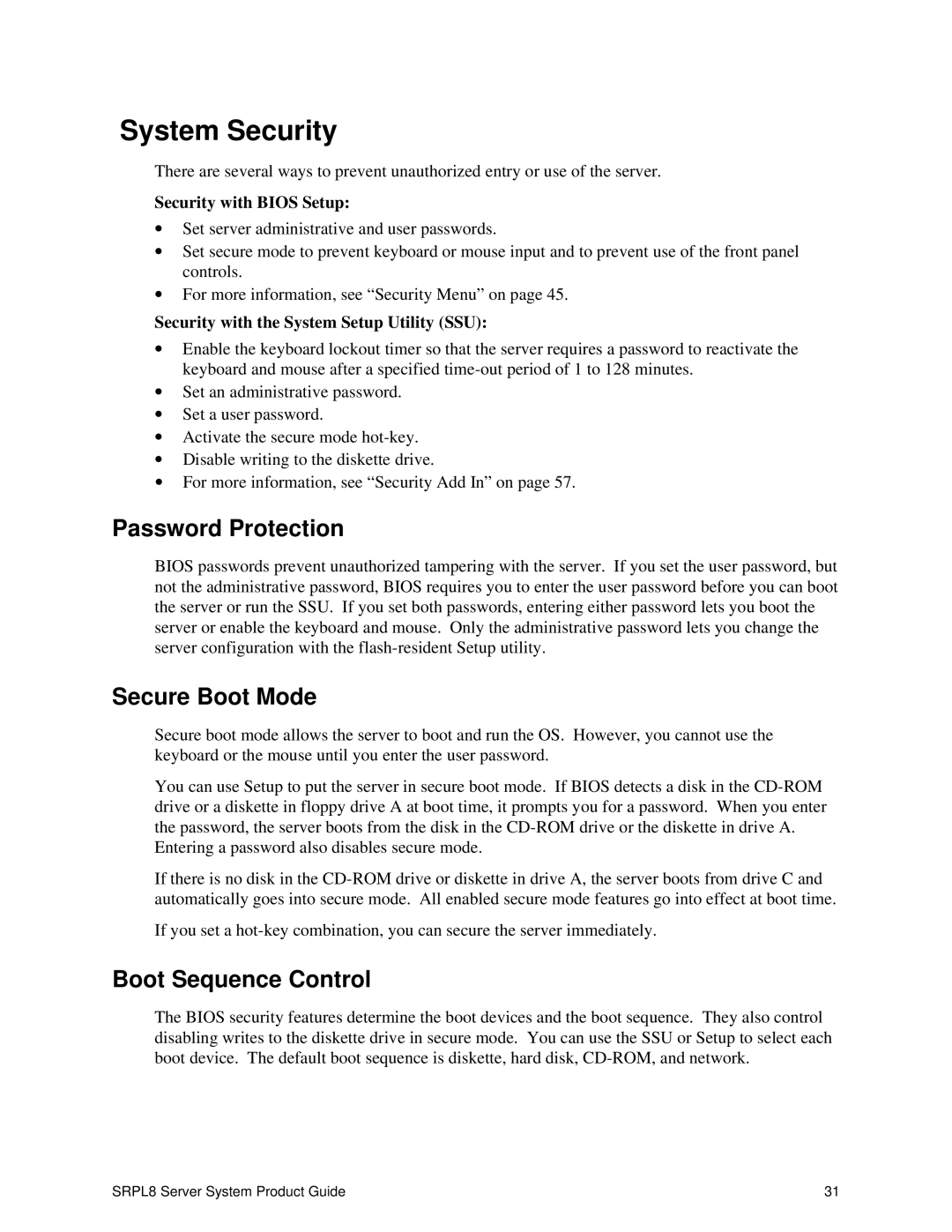System Security
There are several ways to prevent unauthorized entry or use of the server.
Security with BIOS Setup:
∙Set server administrative and user passwords.
∙Set secure mode to prevent keyboard or mouse input and to prevent use of the front panel controls.
∙For more information, see “Security Menu” on page 45.
Security with the System Setup Utility (SSU):
∙Enable the keyboard lockout timer so that the server requires a password to reactivate the keyboard and mouse after a specified
∙Set an administrative password.
∙Set a user password.
∙Activate the secure mode
∙Disable writing to the diskette drive.
∙For more information, see “ Security Add In” on page 57.
Password Protection
BIOS passwords prevent unauthorized tampering with the server. If you set the user password, but not the administrative password, BIOS requires you to enter the user password before you can boot the server or run the SSU. If you set both passwords, entering either password lets you boot the server or enable the keyboard and mouse. Only the administrative password lets you change the server configuration with the
Secure Boot Mode
Secure boot mode allows the server to boot and run the OS. However, you cannot use the keyboard or the mouse until you enter the user password.
You can use Setup to put the server in secure boot mode. If BIOS detects a disk in the
Entering a password also disables secure mode.
If there is no disk in the
If you set a
Boot Sequence Control
The BIOS security features determine the boot devices and the boot sequence. They also control disabling writes to the diskette drive in secure mode. You can use the SSU or Setup to select each boot device. The default boot sequence is diskette, hard disk,
SRPL8 Server System Product Guide | 31 |
